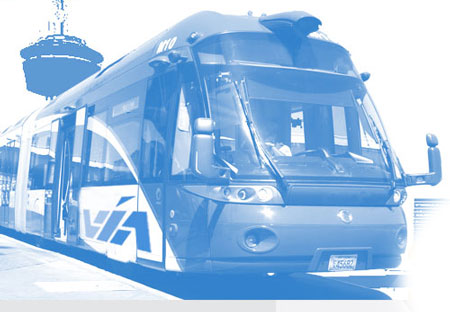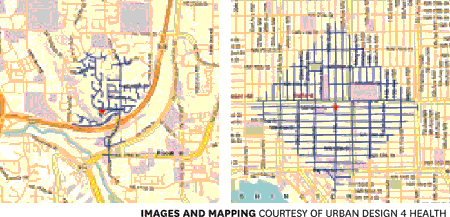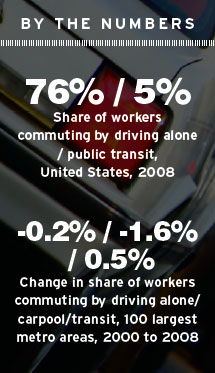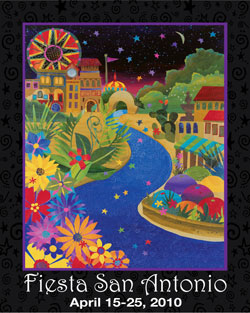See how San Antonio plans to make its buses perform like light rail
Can buses look and operate more like light rail?
VIA Metropolitan Transit officials think so. And now the public can peek under the hood of a plan to spend $57 million to speed up bus travel and make trips more comfortable along Fredericksburg Road.
The agency will hold three public meetings over two weeks to explain the latest on an environmental study:
Monday, May 24
6 p.m.
Jefferson High School cafeteria
723 Donaldson
Thursday, May 27
1:30 p.m.
Norris Conference Center
Wonderland of the Americas Mall
4522 Fredericksburg Road, Suite A100
Thursday, May 27
6 p.m.
Norris Conference Center
Wonderland of the Americas Mall
4522 Fredericksburg Road, Suite A100
The study says buses could scoot along 30 percent faster on nine miles between downtown and the Medical Center, two prime job centers anchoring one of VIA’s busiest routes. More than a fourth of the area’s 79,000 residents depend on transit.
The cost for bus rapid transit, as it’s called, includes traffic signal controls to give buses more green time, faster ticketing, sidewalk-level boarding, two roomy transit centers and eight enhanced stations. The hope is that developers will create walkable, mixed-used hubs around the stops.
The cost does not include dedicated bus lanes on part of the route, as proposed in previous plans that put the tab at around $100 million.
Construction is supposed to start this year, with service starting in late 2012.
LINKS:
Automobiles Bicycles: suburban sprawl walking
by Patrick
Comments Off on How cul-de-sacs make people fatter
How cul-de-sacs make people fatter
Cozy, secluded and deadly. That’s how a new study portrays suburban America’s unassuming cul-de-sacs.
Why?
Because people who live in the pods don’t walk and bicycle much, according to research by a University of British Columbia professor. The swirling, disconnected streets don’t allow short trips to a whole lot of places.
Look at the maps above. They show all paths within one kilometer of a selected spot in each of two Seattle neighborhoods; one constricted by meandering streets and the other splayed open by a connected grid.
People who live in the networked neighborhoods travel 26 percent fewer miles by car than those who ensconce themselves in the spaghetti-and-pod burbs.
And, studies by the author, Lawrence Frank, and others show, people who live in neighborhoods that are more walkable tend to, well, walk more. And bike more. That means, per capita, their body mass indexes are lower and they breathe cleaner air.
LINK:
It happens to the best of us
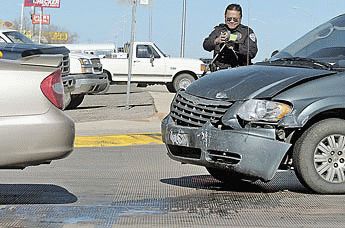 I’m a good driver. No, really, I am. I do all the things good drivers do: I try to predict what other motorists are going to do and plan accordingly (and I’m right most of the time, no small feat in this town); I keep an eye far enough down the road so as to see hazards well in advance; I know traffic laws inside-and-out and obey them (OK, except maybe for a few mph over the speed limit); I yield the right-of-way to bozos who aren’t paying attention or just don’t care; and so on. But last Friday I did something I’ve seen dozens of others do and something that I’m usually very aware of and am careful to avoid, and the result was a lovely fender bender.
I’m a good driver. No, really, I am. I do all the things good drivers do: I try to predict what other motorists are going to do and plan accordingly (and I’m right most of the time, no small feat in this town); I keep an eye far enough down the road so as to see hazards well in advance; I know traffic laws inside-and-out and obey them (OK, except maybe for a few mph over the speed limit); I yield the right-of-way to bozos who aren’t paying attention or just don’t care; and so on. But last Friday I did something I’ve seen dozens of others do and something that I’m usually very aware of and am careful to avoid, and the result was a lovely fender bender.
Of course, the first question folks ask is if anyone was hurt. Fortunately, everyone was fine– in fact, the airbags didn’t even deploy. So the next question, then, is what happened?
What happened to me has probably happened to most motorists at one time or another. I was making a right turn and there was a vehicle stopped in front of me waiting for a gap in the traffic. A gap came along and the vehicle in front of me started moving forward, so I started looking back for a gap to merge into. When a break came along a few seconds later, I started to accelerate only to realize that the car in front of me didn’t actually go when I thought they did. I hit the brakes hard but it was already too late. BAM!
Of course, the way to avoid this is to always look forward again at where you’re going before you start to accelerate, not only to make sure the preceding vehicle has cleared, but also to make sure that another previously unseen vehicle, pedestrian, bicyclist, UFO, or whatnot hasn’t suddenly appeared in your path. I usually do this, but this time I was in a hurry and, as a result, was a little careless.
So hopefully my story will help someone else avoid this all-too-common traffic mistake and the unfortunate results it can bring.
Commuting Passenger rail Transit
by Patrick
Comments Off on One in four commuters are part of this growing national trend
One in four commuters are part of this growing national trend
One in four big-city commuters walk to work, ride bicycles, use transit or at least share car rides with other workers, a new study says. A good number even stay home to work.
In other words, 24 percent of Americans in the 100 largest metro areas don’t drive solo to work, according to “The State of Metropolitan America,” a report released this week by the Brookings Institution.
And though a whopping three-fourths still drive alone, that portion has been shrinking, says the report’s 12-page commuting chapter.
From 2000 to 2008:
TRANSIT RIDERSHIP: went up for the first time in 40 years, reaching 5 percent in 2008, though that’s still shy of 5.1 percent from 1990.
DRIVING SOLO: slid down slightly, mostly in 2007 to 2008, the first year of the Great Recession and a time of shockingly high gas prices. Austin led the nation’s biggest cities with a 3.6 percent drop.
CARPOOLING: dropped to 11 percent, less than the 12 percent from 1970.
TWO-WHEELING: by bicycle and motorcycle rose slightly, to 1.7 percent.
WALKING: declined to 2.8 percent, down from 7.4 percent in 1970.
TELECOMMUTING: jumped to 4.1 percent.
The report breaks down the trends by demographics and geography and mentions some other notable Texas numbers:
El Paso is third in the U.S. for a 3.2 percent increase in solo driving and second for a 5.2 percent decrease in carpooling; McAllen ranks in the top five for both the percentage of commuters who carpool and those who quit carpooling; and Houston is fifth for loss of transit share.
LINKS:
Laws and policies Roads Transit: MPO public meeting
by Brian
Comments Off on MPO holding public meetings for 4 year plan
MPO holding public meetings for 4 year plan
 The San Antonio-Bexar County Metropolitan Planning Organization (MPO) will be holding three public meetings on its 2011-2014 Transportation Improvement Program (TIP). Essentially, this is the revolving list of local transportation projects that are proposed to be funded* over the next three four years (yes, I can count <g>). The projects selected are typically a subset of those in the current long-range plan. Obviously, what eventually does get funded depends heavily on what money eventually comes to this area, but this plan identifies the projects that are first in line to get whatever funding becomes available. The plan includes allocations for all forms of transportation including highways, streets, transit, and bike and pedestrian amenities.
The San Antonio-Bexar County Metropolitan Planning Organization (MPO) will be holding three public meetings on its 2011-2014 Transportation Improvement Program (TIP). Essentially, this is the revolving list of local transportation projects that are proposed to be funded* over the next three four years (yes, I can count <g>). The projects selected are typically a subset of those in the current long-range plan. Obviously, what eventually does get funded depends heavily on what money eventually comes to this area, but this plan identifies the projects that are first in line to get whatever funding becomes available. The plan includes allocations for all forms of transportation including highways, streets, transit, and bike and pedestrian amenities.
The MPO is the agency charged under state and federal law to control the transportation funding purse-strings for the San Antonio urban area, which in this case includes Bexar County and portions of Comal and Guadalupe counties in the Schertz area. The TIP is required under federal regulations as a condition of receiving federal funding. Projects not in the TIP cannot use federal funds, so this is an important process.
There will be three meetings, all with identical content:
- Tuesday, May 4th from 5:00 p.m. to 8:00 p.m.
- Thursday, May 6th from 11:30 a.m. to 1:30 p.m.
- Saturday, May 8th from 9:00 a.m. to noon
All three will take place at VIA Metro Center on San Pedro just south of SAC. Visitors will also be able to check-out some new interactive systems and discuss the transportation planning process with the folks that make these decisions.
For more information and to see a draft copy of the TIP, click here. Also, see the interactive site here (link added 5/4/10 10:35 am).
(* As I’ve discussed before vis-a-vis the US 281 project, the term “funded” in transportation parlance means that anticipated revenues during the plan timefame will be able to fund a project. Until those revenues are actually allocated to the MPO, a project does not actually have money available to start work.)
Every driver commits at least some of these six sins
Does talking to a passenger distract your driving?
Yes, it does, according to safety officials. And that’s just one of a half dozen habits that distract motorists.
Drivers are considered distracted when they:
- Talk to passengers
- Smoke
- Eat
- Fiddle with dashboard controls
- Reach for something
- Talk or text on a cell phone
OK, so some of these, especially the last one, aren’t surprises. And it’s the last one that Oprah Winfrey is targeting with her “No Phone Zone” Day, which is tomorrow.
Agencies across the nation, including the Texas Department of Transportation, have joined Oprah’s campaign. Tomorrow, electronic highway signs will flash, “Make Your Vehicle a No Phone Zone,” or “Drive Now. Text or Talk Later.”
Motorists using hand-held devices are four times more likely to be in a crash, TxDOT says. All distractions caused 103,526 accidents and 524 deaths in Texas in 2008.
Nationwide, distractions led to 5,870 deaths and 515,000 injuries, statistics show.
Young people are especially vulnerable. Almost half of teens use phones while driving, a Texas Transportation Institute study found.
More information:
My days at the TxDOT photo archive
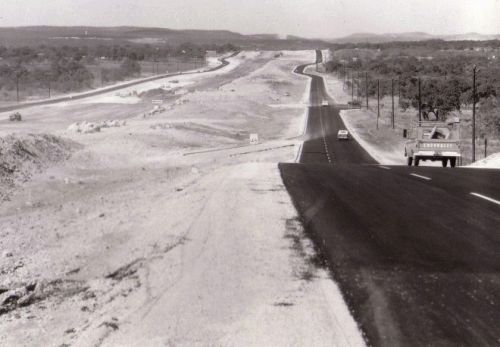
I-10 south of De Zavala looking north, 1966 (TxDOT archive)
After returning from my Florida vacay a couple of weeks ago, I spent the balance of my time off of work at the TxDOT archive in Austin. I had been wanting to go for years after seeing some of the great historical photos from there on other roadgeek websites. I was not disappointed.
Parking Roads Safety Transit: Fiesta
by Patrick
Comments Off on Five things to know before heading to Fiesta events
Five things to know before heading to Fiesta events
Soggy skies put a damper on the start of the year’s biggest party, with officials cancelling tonight’s Fiesta kickoff at Alamo Plaza and moving the opener to Market Square tomorrow. Hope you didn’t head out to Alamo Plaza.
No worries about the revelry cranking up. It will. But before joining the fun, here are some things to check on:
PARKING: Even tested downtown drivers can lose a little focus when Fiesta fills up parking lots and kicks up parking fees. The Express-News has a decent map of parking lots, but alas, doesn’t include fees. MAP
EXPRESS BUSES: Avoid parking altogether by hopping on special Fiesta express buses. VIA set up an event page with details, which includes reroutes of regular services due to street closures. FIESTA BUSES
DRINKING: If you drink, have a drinking and NOT driving plan. The easiest thing to do is assign a designated driver. In a pinch, Yellow Cab will provide up to 700 free rides for certain events, thanks to a state grant. Of course, you can always fork out your own $25 for a cab, and it’ll be a lot cheaper than a $17,000 DWI fine. CALL 222-2222
TRAFFIC: Make it easy on yourself. Just a few minutes checking TransGuide’s site for wrecks and slowdowns can save you an hour on the highway. TRANSGUIDE
WEATHER: Nuff said on that. FORECAST
Now go have a great time. And be safe.
More links:
